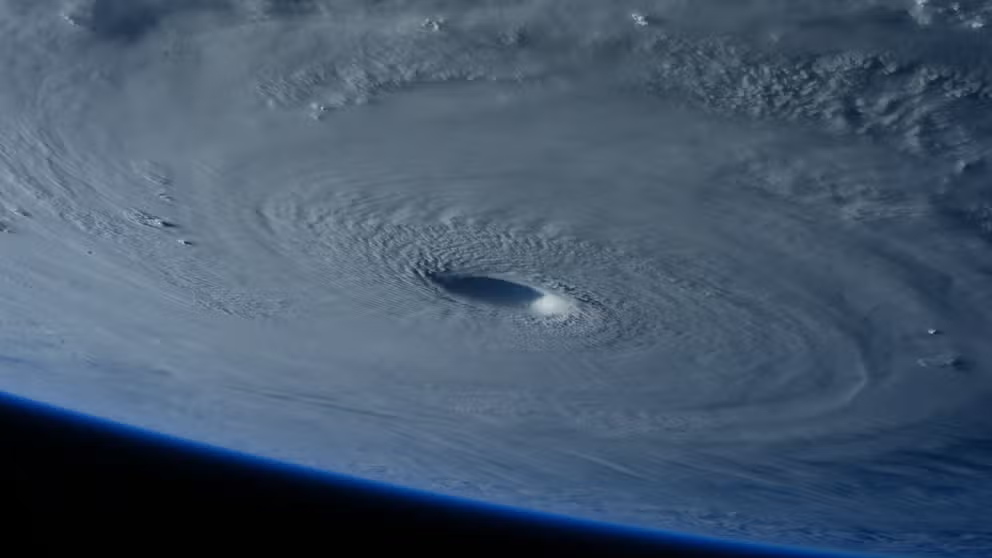Learn how to survive a hurricane if you didn't evacuate
Weathering the storm at home is all about how you prepare for a hurricane.
How to ride out a hurricane if you didn't evacuate
A hurricane is barreling toward the coast and you’re trying to decide whether you should evacuate or hunker down at a home.
Visit the FOX Weather Wire for live updates on Hurricane Ian as it barrels toward Florida. Click here for the latest forecast, evacuation orders and more.
A hurricane is barreling toward the coast, and you’re trying to decide whether you should evacuate or hunker down at a home.
The decision-making process should be driven by information being provided by local emergency managers, who are in charge of managing evacuations.
HOW TO WATCH FOX WEATHER ON TV
Most emergency managers agree that you should hide from the wind and run from the water. In other words, if you live in an area that will become flooded during a storm, you should evacuate. If the storm’s impacts will primarily be from the wind, you may decide to ride it out.
The best advice: If you’re being told to evacuate, you should heed those warnings and stay safe.
If you opt to stay home during the storm, here are some hurricane safety tips to help you weather it.
Assemble an emergency kit now
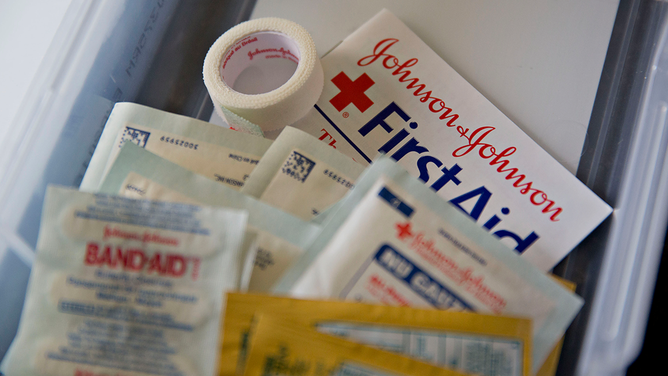
Johnson & Johnson first aid products are arranged for a photograph in Tiskilwa, Illinois, U.S., on Thursday, July 2, 2015.
(Daniel Acker / Bloomberg / Getty Images)
A kit of emergency supplies is the foundation of any disaster plan, but it becomes an even more critical part of the strategy if you opt to stay at home during a hurricane.
According to the Federal Emergency Management Agency, some items in your safety supply kit should include:
- Water — You need a gallon per person per day for several days. It will be used not only for drinking but also for sanitation. Pets also require one gallon per day, as well, according to the Department of Health and Human Services.
- Food — You need at least a three-day supply of non-perishable food. Canned goods should be stored in a cool, dry place, and boxed foods should be stored in plastic or metal containers that tightly close, according to FEMA. Be sure to include food for your pet, too.
- First aid kit.
- Dust mask — You can use this to help filter the air in the event it becomes contaminated.
- Whistle — You can use this to signal for help.
You can get a much more exhaustive list of supplies for your emergency kit in the sections below and here.
Gather food and water
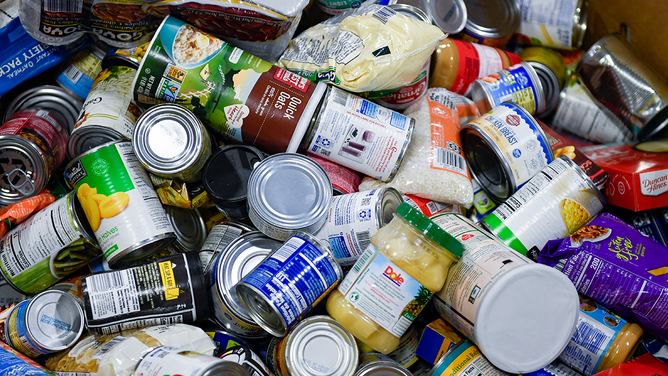
A pile of canned goods.
(Ben Hasty / MediaNews Group/Reading Eagle / Getty Images)
This is so important, that it needs to be said twice.
According to FEMA, you should have at least a three-day supply of non-perishable food in your emergency kit. You might want to add more if you decide to ride out a storm at home as you may be cut off from a reliable food supply for a while.
If you are planning on eating canned goods that have been in your pantry for a while, be sure to check how long they've been there. FEMA advises consuming canned foods within a year or by the expiration date on the can. Also be sure that the canned food hasn't been stored in or near extreme heat, which could cause the food to spoil.
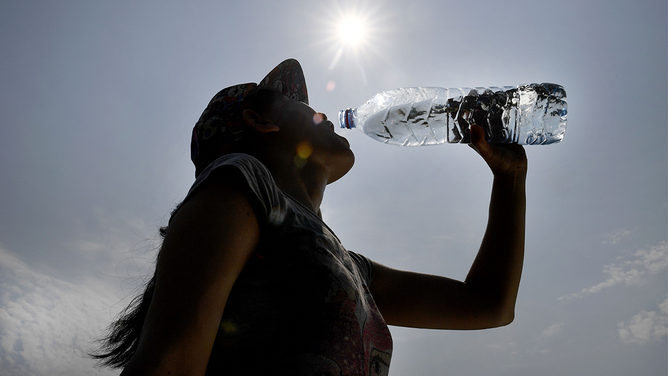
A woman drinks water from a plastic bottle on June 20, 2017.
(FRED TANNEAU/AFP / Getty Images)
As far as water goes, FEMA recommends that you have a gallon of water per person per day and the supply should be enough to last several days. When storing water, be sure to keep it away from direct sunlight and in a cool location.
According to FEMA, the safest and most reliable emergency supply of water is commercially bottled water. Be sure to keep bottled water in its original container, and do not open it until you need to use it.
If you are planning on preparing your own containers of water, FEMA recommends that you use food-grade water storage containers or re-use two-liter plastic soft drink bottles. Do not re-use plastic jugs or cardboard containers that have had milk or fruit juice in them. Find more information about storing water here.

Two red paper cups.
(Artem Beliaikin / Unsplash)
Also be sure to include the following food- and drink-related items in your emergency kit:
- Manual can opener.
- Mess kits, paper cups, plates, paper towels and plastic utensils.
- Moist towelettes, garbage bags and plastic ties.
Again, do not forget to gather enough extra food and water for your pets, too.
Prepare your property ahead of time
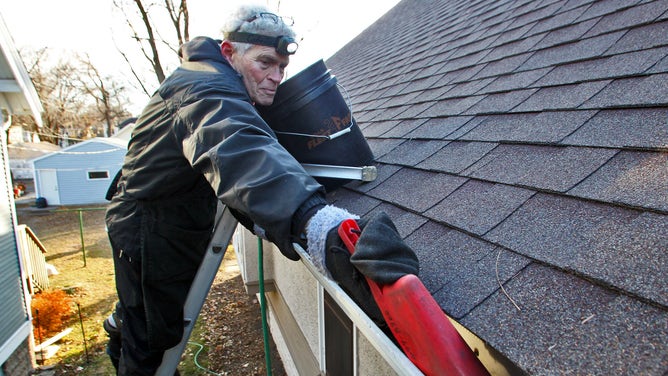
Burton Johnson, a professional gutter cleaner, cleans a home's gutters before a storm.
(Marlin Levison / Star Tribune / Getty Images)
If you decide to hunker down, making sure that your property is ready for the hurricane ahead of time is critical. Any damage to your home can put the people inside at a health and safety risk:
- Clear all your drains and gutters of debris, according to FEMA. You should also trim back trees in your yard to reduce the chance of a limb falling into your home.
- Clear your yard of any loose items such as patio furniture, garbage cans, bicycles and grills. Those items could become airborne during a hurricane and damage your home. Bring those kinds of things indoors.
- Use hurricane shutters to cover their windows and doors, suggest FEMA. If not shutters, nail plywood over windows and doors to protect you from glass that may be shattered by high winds. Don’t forget about your garage door. It is one of the most vulnerable parts of a home during a hurricane, according to FEMA.
- Include plastic sheeting and duct tape in your emergency kit in case you need to shelter in place.
- Also include a wrench or pliers in your emergency kit so that you can turn off utilities if need be.
And if you haven't done so already or recently, take video of each room in your home for insurance inventory purposes. Upload the videos to some sort of cloud based storage system or if the file size permits, email the files to yourself so copies exist in case your phone becomes damaged or lost in the storm.
You’re on your own during a hurricane
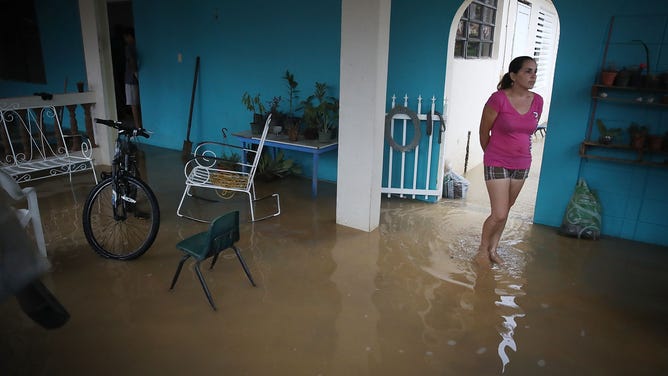
Abigail Maldonado stands in her home inundated with water after a heavy rain passed through following Hurricane Maria on October 6, 2017 in Utuado, Puerto Rico.
(Joe Raedle / Getty Images)
Bottom line: if you've been told to evacuate, you should. If you need help finding your evacuation zone, check out this guide.
If you’ve been told to evacuate and you don’t, you’ll likely be on your own during the hurricane. Most emergency agencies will be staffed during the storm, but conditions won’t allow them to respond to emergencies in a safe way.
Once the storm lets up, emergency crews will usually start fanning out across the area to address issues stemming from the storm. Keep in mind that fallen trees or power lines could block the roads that emergency crews would use to get to you. It could be a while before the roads have been cleared enough for them to reach you during the disaster.
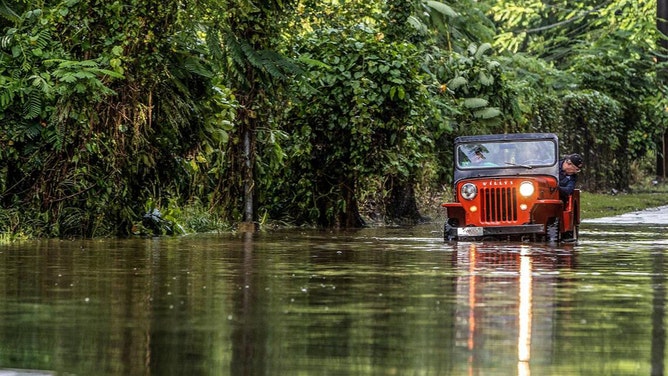
Juan Antonio Molina drives his old jeep through a road flooded in Toa Alta by Hurricane Fiona that passed by Puerto Rico on Monday Sept. 18, on Wednesday, Sept. 20, 2022.
(Pedro Portal / Miami Herald/Tribune News Service / Getty Images)
As stated earlier, you’ll want to have a first aid kit on hand. According to the Centers for Disease Control and Prevention, any minor injuries should be quickly treated in order to prevent infection. You should seek medical attention as soon as possible for major injuries.
Other medical supplies and hygienic products to keep on hand:
- Prescription medications.
- Non-prescription medications such as pain relievers, anti-diarrhea medication, antacids or laxatives.
- Prescription eyeglasses and contact lens solution.
- Feminine supplies and personal hygiene items.
- Infant formula, bottles, diapers, wipes and diaper rash cream.
- Masks — You should have masks for everyone ages 2 and above. Soap, hand sanitizer and disinfecting wipes. This is recommended by the CDC in light of the coronavirus pandemic.
Plan on losing power
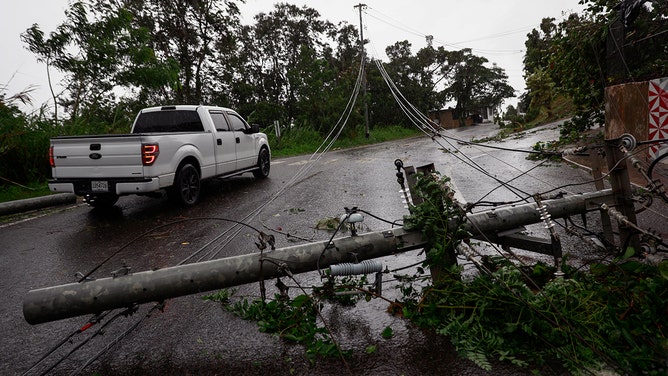
Downed power lines on road PR-743 in Cayey ,Puerto Rico as the island awoke to a general power outage on September 19, 2022 in San Juan, Puerto Rico.
(Jose Jimenez / Getty Images)
Losing electricity at your home during a hurricane is almost a given. Before the storm hits, be sure to do the following:
- Keep a flashlight in your emergency kit.
- Keep your portable electronics fully charged for as long as possible.
- Consider buying a portable battery that you can use to recharge your devices after you lose power.
- Have some matches on hand in a waterproof container.
- Buy a fire extinguisher.
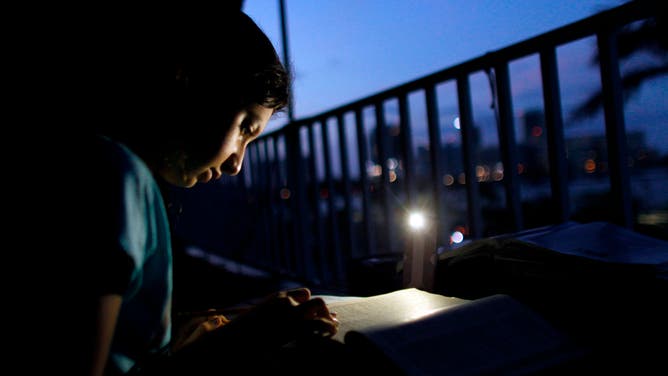
Alana Rivera, age 10, does her daily homework in her apartment balcony lit by a cell phone light in San Juan, Puerto Rico, November 6, 2017. The school reopened its doors without electricity to receive students 46 days after Hurricane Maria hit the island.
(RICARDO ARDUENGO / AFP / Getty Images)
You’ll also want to have some activities that don’t require power on hand when the lights go out, especially if you have children. Here are a few suggestions:
- Board games, puzzles and activity books.
- Paper and pencil.
Stay informed during the hurricane
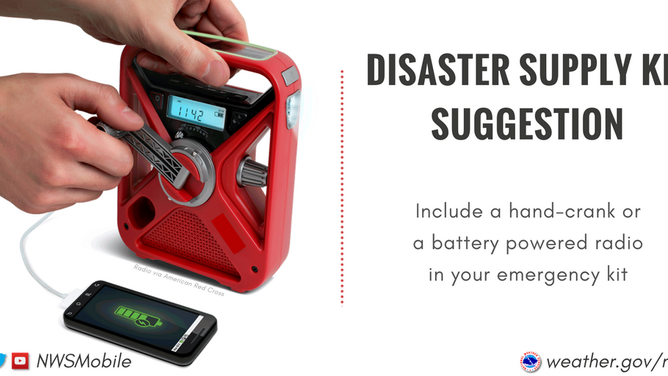
A weather radio.
(National Weather Service Mobile)
It’s imperative that you have a way of getting information and news reports during and after the storm. Some suggestions on how you can stay informed include:
- Your cellphone, as long as you can keep it charged and have service.
- A battery-powered or hand-crank radio is another way of getting information.
- Televisions that run on a rechargeable battery. That’ll work as long as you can keep recharging it.
Anticipate disruptions to your daily life

A motorist drives down a road in the wake of Hurricane Ida on September 4, 2021 in Grand Isle, Louisiana.
(Sean Rayford/Getty Images)
Don’t expect to be able to run out to the grocery store and replenish your supplies or fill up your gas tank after the hurricane has passed. Long-term power outages, damaged utilities and blocked roads will likely lead to disruptions in the supply chain. It may be several days before stores and gas stations can restock and reopen. Plan accordingly.
To help you and your family get back on your feet after the storm, consider including the following in your emergency kit:
- Cash or traveler's checks.
- Local maps.
- Important family documents, such as copies of insurance policies, identification and bank account records saved electronically or in a waterproof, portable container.
- Complete change of clothing appropriate for your climate and sturdy shoes.
